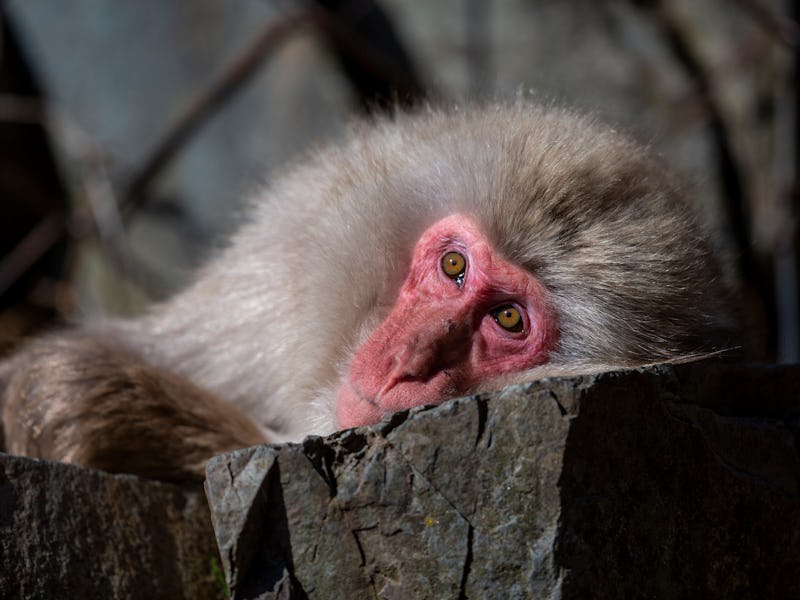Modern monkey teeth could hold the secret to ancient human society
Studying living primates today could continue to offer crucial clues that have been overlooked in the past.

The macaques of Japan’s Koshima Island are a clever bunch. Well known for performing some remarkably complex tasks, such as washing sweet potatoes and filtering the wheat from sand in the seawater, they’ve even been spotted catching live octopuses from the sea.
During continuous observations, the macaques’ unique skills were seen rapidly spreading through the population and provided some of the first evidence of local habits in animals.
I recently visited the Primate Research Institute at Kyoto University to study the teeth remains of macaques who had passed away naturally on Koshima Island, one of the longest-running primatological field sites in the world.
It was part of a project to create a database of tooth wear and dental disease in wild primates — but I very quickly noticed something extremely unexpected. All the deceased macaques had identical — and very unusual — tooth wear for a primate. And not only that, it seemed remarkably similar to the tooth wear commonly found in hominin (humans and our closely related ancestors) fossil samples. I knew I had to investigate further.
Through collaborations with local primatologists and experts in studying microscopic features on tooth surfaces, we studied the tooth remains of 32 individuals in more detail, recording the overall tooth wear, fractures, and pathologies. This allowed us to directly compare the features on the tooth’s surface with published examples in hominin fossils.
Surprising toothy similarities
Japanese macaque.
“Toothpick” grooves on back teeth and large vertical scratches on front teeth are thought to be unique to hominins, and most likely caused by distinctive tool use. The markings are used as evidence for the earliest forms of cultural habits identified during human evolution.
But as my colleagues and I found these same types of unusual tooth wear in the preserved teeth of the deceased wild Koshima macaques, we set out to try to explain the similarities using a combination of extensive literature and ongoing field observations.
In fossil hominin samples, the large scratches on front teeth are typically considered to be caused by a type of behavior called “stuff and cut” in which an item, such as an animal hide, is held between the front teeth and a stone tool used to slice portions off.
Accidental contact of the stone tool with the outside of the front teeth causes the marks, and it’s suggested that by studying the orientation and concentration of scratches in different areas of these teeth, insight into right or left-handedness can be gleaned.
Similarly, because “toothpick” grooves commonly form between back teeth, and long thin parallel scratches are often found within these grooves, it has long been considered that these grooves must be caused by a tool being placed into the gap between teeth and repeatedly moved back and forward to remove food debris or alleviate discomfort (hence the name toothpick grooves).
Primate teeth could help us understand archaic hominins.
But there is no evidence for these types of tool use in Koshima Island macaques, or indeed any behavior that could be considered habitual tool use. Instead, this wear is likely caused by eating shellfish and accidentally chewing and consuming sand. The macaques were frequently observed picking up food from sandy beaches – and despite their attempts to wash the sand off, some do still get chewed as there is sand in their feces.
Shellfish are also regularly eaten, and the macaques use their front teeth to both dislodge them from rocks and scoop out the contents. These behaviors likely cause this extreme wear, due to the sand, hard shells, and rock coming directly into contact with different tooth surfaces on a regular basis.
It is easy to imagine how large parallel scratches could form when biting down on foods covered in sand, or when attempting to dislodge and consume shellfish with no tools.
Why the root grooves and markings within the grooves should form on back teeth when sand or grit is chewed needs further research but is probably due to small hard particles passing over these surfaces during the mastication cycle and during swallowing.
Implications for human evolution
Japanese macaque in a hot spring.
So, it seems that normal chewing and food processing can cause these sorts of wear patterns without the need to infer complex and habitual tool use.
And as there are even more dental similarities between fossil hominin samples and this macaque group at the microscopic level — as well as high rates of tooth chipping, extreme overall tooth wear, and the beveled appearance of front teeth — it has to be considered that there is a common cause that is nothing to do with tool use at all.
Of course, it is the case that humans have been using tools for a long time, evident by the substantial number of stone tools found throughout human evolution. But this does not mean that they were responsible for the unusual wear found on hominin teeth.
In fact, there is growing evidence for grit mastication, and marine mollusks are also thought to have been consumed. If the fossil hominin tooth wear is caused by eating behavior, then studying their tooth wear in more depth may give vital insight into dietary and behavior changes during human evolution. And studying living primates today could continue to offer crucial clues that have been overlooked in the past.
This article was originally published on The Conversation by Ian Towle at London South Bank University. Read the original article here.